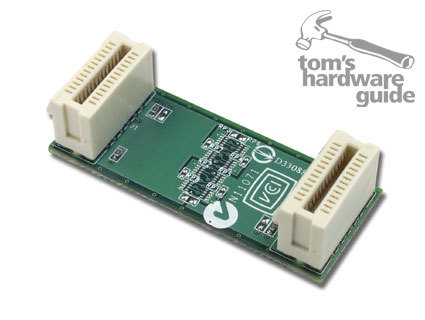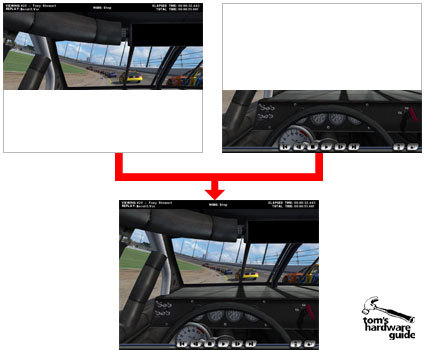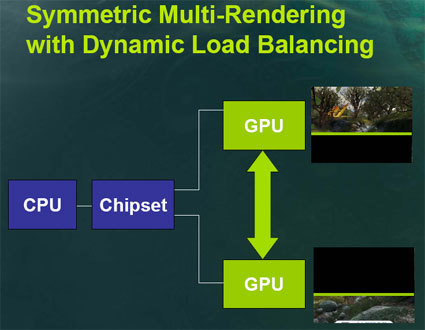NVIDIA Takes a Walk on the SLI Side with Double Graphics Processing
NVIDIA SLI Multi-GPU
The NVIDIA SLI connector.
NVIDIA's new Multi-GPU technology employs a simple u-shaped bridge-connector to link the cards, allowing synchronization and transfer of image information. This also makes external cables superfluous. Like Alienware's solution, the NVIDIA setup has one card rendering the top half of the scene while the other one renders the bottom.
SLI the NVIDIA way. Card one renders the upper half of the image, card two the lower one. The result is merged together.
The important difference here is that this division is not fixed at 50/50 but is flexible. Using a dynamic load-balancing technique, NVIDIA divides the load evenly between the two cards, letting each work at full capacity. It becomes obvious that this type of load balancing is necessary and makes a lot of sense if we look at an example that can be found in any first-person shooter or racing game. The lower part of the scene is typically very complex with lots of detail, while the top part often only displays the mostly static sky.
Load balancing makes sure that both cards get the same load.
Get Tom's Hardware's best news and in-depth reviews, straight to your inbox.
Current page: NVIDIA SLI Multi-GPU
Prev Page Requirements For Double Graphics Processing Next Page Hardware Requirements

